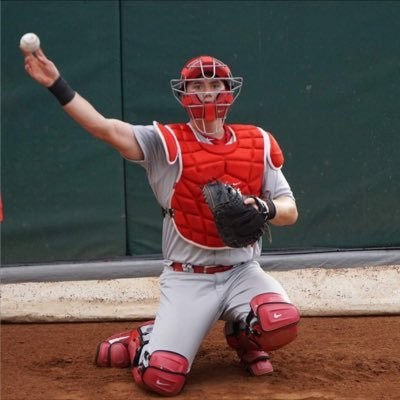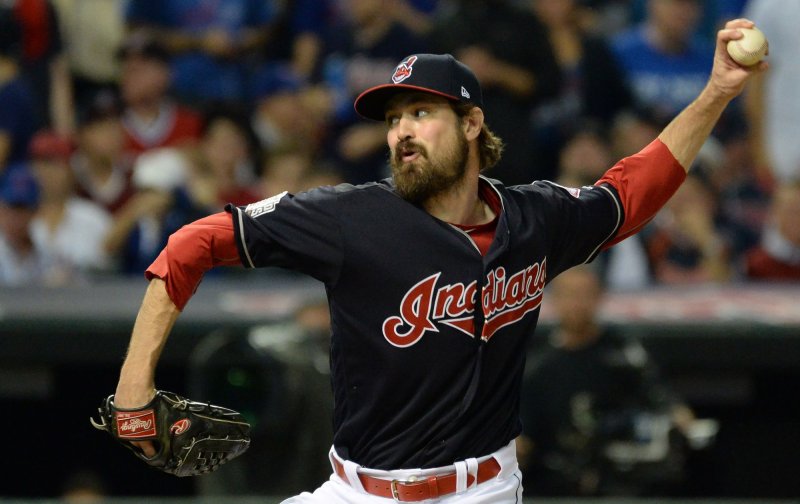On Wednesday, the St. Louis Cardinals made a big acquisition
to acquire 6-time All-Star first baseman, Paul Goldschmidt from the Arizona
Diamondbacks, as they traded away starting pitcher Luke Weaver, catcher Carson
Kelly, infielder Andrew Young, and a 2019 Competitive Balance Round B draft
pick.
I had known for awhile of the Cardinals’ desire to get
Goldschmidt, and when the trade was commenced and made, of course, I was
stoked. The Cardinals are getting one
of the best hitters in the game, and Goldschmidt has established himself as an
elite player at his position. The
Cardinals did have to give up to get, but I think it is a good trade,
especially since the Cards are going for the title in 2019. But just to double check, I have decided to
do a rundown on all of the moving parts that were involved in this trade.
What the St. Louis Cardinals Received:
:format(webp)/cdn.vox-cdn.com/uploads/chorus_image/image/62633159/usa_today_11214503.0.jpg) |
| Paul Goldschmidt is one of the best players in the MLB, and he will likely be an All-Star in 2019. |
2018 (w/Arizona): .290 AVG, 33 HR, 83 RBI, 7 SB, .389 OBP,
.533 SLG, .922 OPS, 5.1 WAR
Goldschmidt has been a dominant hitter ever since he led the
league in homers all the way back in 2013, and it’s not just how well he can
hit balls over the fence. He is a
disciplined hitter that has a very good approach to the plate, and he does a
great job of getting hits and drawing walks to help his team.
He has had better than an .800 OPS in every year he’s been
in the majors, and he has not had below a .290 batting average since 2012. Goldschmidt has also averaged 31.5 homers
and 102 RBIs in his past 4 seasons, and he’s drawn at least 90 walks or more in
5 of his past 6 seasons, including this past one in 2018. He’s even stolen 32 bases in a season to show
his ability to excel on the basepaths.
Also, he’s been to the All-Star game for six consecutive seasons.
He doesn’t have many
flaws, but one can look hard enough to find one, or multiple. As some may look to pick at them, here's what they may say:
Perhaps his most glaring flaw, is his less than stellar defensive
play. On the Fangraphs page, his
defensive WAR has consistently been below average, though his UZR has been
historically slightly above average for his career. Goldschmidt does not commit
many errors, which is good, but advanced statistics suggests that he may not
have as much range for a player at his position.
Also, he has also played in historically a pitcher’s
park.
According to
ESPN’s park factors,
Arizona has the 11
th most hitter friendly ballpark, as where St.
Louis rated tied for 23
rd in the same category.
Conversely, that would also mean that St.
Louis’ Busch Stadium would rate as tied for 7
th most pitcher
friendly ballpark.
Therefore, some might
expect Goldschmidt to even have a slight dropoff in production as a result of
moving from a hitter friendly park to one that tends to favor pitchers.
Another potential concern is that he is starting to get
older as a player. Goldschmidt will be
turning 32 next September, and some of the projection models may project
decline from him due to its historical analysis. But right now, Goldschmidt is one of the best
players at his position, if not the best, and he has not missed the All-Star
game in a long while.
Overall, Goldschmidt is a terrific hitter that can get hits,
draw walks, hit for power, and he also may be an underrated baserunner. Even though his range may rate as below
average in the field, Goldschmidt has consistently performed an elite, All-Star
level, and in overall WAR, he was only second among all first basemen in the
majors to Atlanta Braves’ first baseman, Freddie Freeman.
Goldschmidt’s 2018 Grade & Overall Value: A
2019 Expectations: All-Star, still one of
the best first basemen in the majors
2019 Rating: 5 stars
What the Arizona Diamondbacks Received:
:format(webp)/cdn.vox-cdn.com/uploads/chorus_image/image/56432627/823688584.0.jpg) |
| Luke Weaver was an integral part of the Goldschmidt trade, and he could be a year-long starter for the D-Backs. |
2018 (MLB): 7-11, 4.95 ERA, 136.1 IP, 7.99 K/9,
3.56 BB/9, 1.25 HR/9, 1.3 WAR
I thought Weaver had a rocky 2018 season, but he’s a
talented young starter that can strike hitters out. However, he only has two very good pitches,
as his bread and butter pitches are his fastball and his changeup, and he will
need to add a quality breaking ball to his arsenal.
He’s had some command issues, and right now, he may be a
backend starter, but he has the potential to be a mid-tier starter in the
future. Definitely, Luke Weaver will be
able to get in many starts in Arizona, and now that he is no longer facing a
log jam for innings by moving out west, he could help speed up the D-Backs’
rebuilding process.
Value: B-
Updated 2019 Expectations: 4th or 5th
starter
Updated 2019 Player Rating:
2 stars (3 star potential)
 |
| The Diamondbacks are hoping that Carson Kelly could develop into a reliable starter in the majors. |
2018 MLB Numbers: .114
AVG, 0 HR, 6 RBI, .205 OBP, .114 SLG, .319 OPS, -0.4 WAR
2018 AAA Numbers: .269
AVG, 7 HR, 41 RBI, .378 OBP, .395 SLG, .773 OPS
(PCL & AAA champions)
Once considered the catcher of the future in St. Louis, he
was blocked for playing time, as Yadier Molina continues to play well, and
hasn’t showed much signs of slowing down.
Kelly didn’t have many opportunities to play in the majors, and he
didn’t hit very well in the times he’s been up.
On the other hand, Kelly’s been very productive in the
minors, as he is a defensive-minded catcher that can call a good game, and he
has helped the Cardinals’ AAA team, the Memphis Redbirds win two titles in the
PCL. He also did a good job of drawing
walks at that level. He’s been quite
successful at the AAA level, and while he hasn’t yet played well in the big
leagues, Kelly could take ample advantage of the opportunity by Arizona if he
gets playing time in the majors.
Value: B-
Updated 2019 Expectations: Backup catcher
Updated 2019 Player Rating: 1.5 stars (2.5 star potential)
 |
| Andrew Young is an offensive-minded utility infielder that is hoping to get called up to the majors one day. |
2018 (AA): .319 AVG, 9 HR, 24 RBI, 0 SB, .395 OBP, .556 SLG,
.950 OPS
2018 (A+): .276 AVG, 12 HR, 34 RBI, 4
SB, .372 OBP, .444 SLG, .817 OPS
2018 (AFL): .301 AVG, 3 HR, 15 RBI, 1 SB, .416 OBP, .521
SLG, .936 OPS
Unlike the other two, Weaver and Kelly, honestly, I was actually unaware that
Andy Young existed in the Cardinals’ organization. MLB Pipeline did not actually rank him in the
top 30 of organizational prospects prior to the trade, but he actually had hit
well in AA at Springfield in his brief tenure there.
He also was added to the Arizona Fall League, where he hit
extremely well there. If I had known
Young existed, I probably would’ve rated him as the 20th best
prospect in the Cards’ organization at the time.
It’s clear from the above numbers that Young is a very good
hitting prospect, as he has hit well at every level. However, the word is that he isn’t ranked
nearly as high as he perhaps should’ve been because scouts don’t seem to be
enamored with his defense or his ability to catch the baseball. He also might not be super fast or have much
range, and he has never recorded 10 or more stolen bases in a season.
He has the ability to make the majors, but if he does, he
could project into a Greg Garcia or Yairo Munoz role at that level.
Value: C+
2019 Expectations: AA starter, late call-up to AAA, and
maybe even be a September call-up
2019 Player Rating: 1 star (2 star potential)
2019 Competitive Balance Comp B Pick
Having draft picks early in the MLB Draft are always nice,
and while people may miss having this pick, it is also uncertain if the player
that will be drafted will be a good player in the future. It is a top 100 pick, as this pick would be
somewhere between the 70th and the 75th pick in the 2019
draft, and essentially this pick is the equivalent to a low second round or
high third rounder. If a team hits on
this selection, they could end up with a Bader or Hicks type of player.
Value: B
2019 Star Rating: 3 star potential
Conclusion:
The Cardinals come away with the big prize in getting easily
the best player in the deal, as they get an elite level player in acquiring 1B
Paul Goldschmidt. The Arizona
Diamondbacks get four second-tier level assets, with the 2019 Competitive Balance
Comp B Pick, Carson Kelly, and Luke Weaver likely being adequate acquisitions
that they received in return.
For Arizona, it seems that they made a quantity for quality trade, as they
accumulated a lot of above average level assets, but likely no elite level
players in this deal, unless if the draft pick turns into a really good
player. Most likely, Luke Weaver may end
up being a backend starter, Carson Kelly could be a solid defensive catcher,
and Andrew Young may be a fringe utility infielder.
But the most surprising aspect was that the Diamondbacks did
not even look to take higher end assets, such as Tyler O’Neill, Elehuris
Montero, or to ask for a polished pitching prospect such as Dakota Hudson, especially
considering that this is one week after the Mariners acquired Jared Kelenic,
who was the 6th overall pick in the 2018 draft in the Cano and Edwin
Diaz deal.
Time will tell to see who will have won the trade, and we
may need to wait 5 years before we can draw a definitive conclusion to answer
that question. But for now, it seems
that the St. Louis Cardinals won this trade, and hands down, they acquired the
best player by far in this deal.
Grade for the St. Louis Cardinals’ Part of the Trade: A
Grade for the Arizona Diamondbacks’ Part of the Trade: B-

:format(webp)/cdn.vox-cdn.com/uploads/chorus_image/image/62633159/usa_today_11214503.0.jpg)
:format(webp)/cdn.vox-cdn.com/uploads/chorus_image/image/56432627/823688584.0.jpg)

